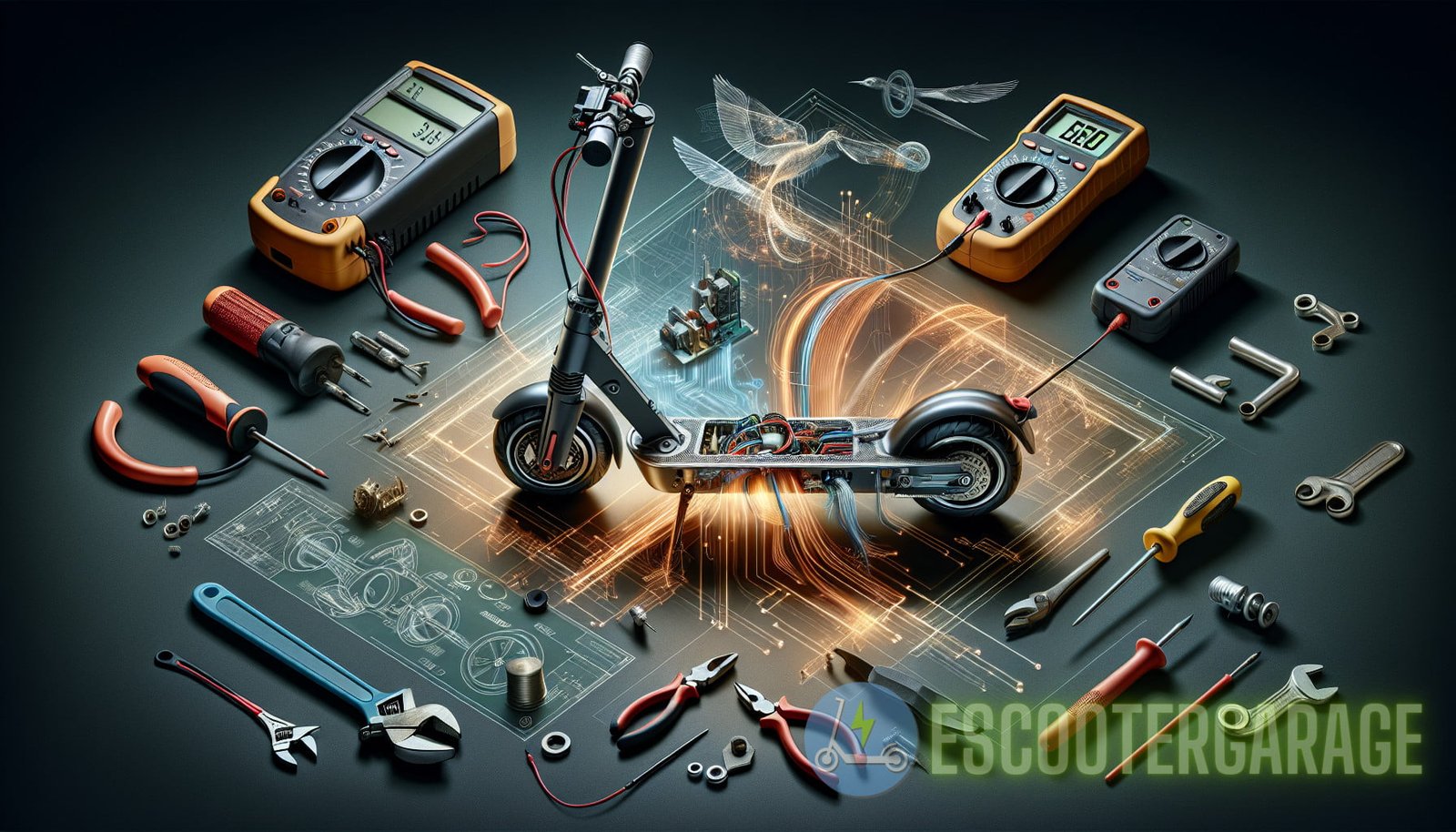Solving eScooter Power Issues: Troubleshooting Tips
If you own an electric scooter (eScooter), you know how convenient they can be for daily commuting or leisurely rides. However, like any other electronic device, eScooters may encounter power issues from time to time. It can be frustrating to have your eScooter suddenly stop working or experience a decrease in power. But don’t worry, this article will provide you with troubleshooting tips to help you solve eScooter power issues and get you back on the road.
Understanding the Basics of eScooter Power
Before we dive into the troubleshooting tips, it’s important to understand the basics of eScooter power. An electric scooter is powered by a battery pack, usually made up of Lithium-ion (Li-ion) batteries. This battery pack provides the energy needed to drive the electric motor and propel the scooter forward. The battery pack is rechargeable, and the charging process replenishes the energy stored in the batteries.
Like any other battery-powered device, eScooters have a limited range and battery life. The range refers to the distance an eScooter can travel on a single charge, while the battery life indicates the overall lifespan of the battery pack before it needs replacement.
Common eScooter Power Issues
Now that we understand the basics of eScooter power, let’s explore some common power issues that eScooter owners may face:
- Low Battery Voltage: If you’re experiencing a sudden decrease in power or notice your eScooter slowing down, it could be due to low battery voltage. Li-ion batteries have a minimum voltage required to operate, and if the battery voltage drops below that threshold, the scooter will lose power.
- Charging Issues: Sometimes, eScooters may not charge properly, leading to power issues. This can be caused by faulty charging cables, connectors, or even a malfunctioning charging port on the eScooter itself.
- Battery Capacity Loss: Over time, Li-ion batteries can experience capacity loss, which means they can hold less charge. This can result in decreased range and overall power output.
- Motor Issues: The electric motor in an eScooter is responsible for propelling the scooter forward. If the motor has mechanical or electrical issues, it can lead to power loss or even a complete shutdown.
Troubleshooting Tips to Fix eScooter Power Issues
Now that we’ve identified some common eScooter power issues, let’s explore troubleshooting tips to resolve those problems:
1. Check Battery Voltage
When experiencing power issues with your eScooter, the first step is to check the battery voltage. Most eScooters have a built-in display that shows the battery voltage. If the voltage is below the minimum required level, you need to recharge the battery. Connect the charger to the eScooter and let it charge fully before attempting to ride again.
2. Inspect Charging Components
If your eScooter isn’t charging correctly, inspect the charging components for any damage or loose connections. Start by checking the charging cable and connectors. If any damage is apparent, replace the cable. Next, examine the charging port on the eScooter. Make sure there is no debris or dirt obstructing the port. If necessary, clean the port using a soft cloth or compressed air. If the problem persists, it might be a faulty charging port that requires professional repair.

3. Calibrate the Battery
Calibrating the battery on your eScooter can help improve its overall performance and resolve power-related issues. To calibrate the battery, start by fully charging it and then allowing it to drain completely. Repeat this process several times to ensure the battery’s capacity is accurately calibrated. Consult your eScooter’s user manual for specific instructions on battery calibration.
4. Check for Motor Issues
If your eScooter is experiencing power loss or is completely unresponsive, there may be motor-related issues. Start by checking the motor wiring and connections. Ensure all wires are securely connected and look for any visible signs of damage or loose connections. If everything appears to be intact, but the motor still doesn’t work, it may require professional repair or replacement.
5. Monitor Battery Capacity Loss
As mentioned earlier, Li-ion batteries can experience capacity loss over time. To monitor the battery’s capacity, keep track of the eScooter’s range on a full charge. If you notice a significant decrease in range compared to when the scooter was new, it may be a sign of battery capacity loss. In this case, consider replacing the battery pack with a new one to restore optimal power and range.
6. Seek Professional Assistance
If you’ve exhausted all troubleshooting tips and your eScooter still has power issues, it’s time to seek professional assistance. Reach out to the manufacturer’s customer support or a certified eScooter repair center to diagnose and fix the problem. They will have the expertise and knowledge to identify the root cause and provide a suitable solution for your eScooter power issues.
7. Regular Maintenance
Prevention is always better than a cure. Regular maintenance can help prevent power issues in your eScooter. Keep the battery terminals clean and free from corrosion. Inspect the electric motor and wiring periodically for any signs of wear or damage. Additionally, follow the manufacturer’s guidelines for charging and storage to ensure optimal battery performance and longevity.
In Conclusion
eScooters can be reliable and efficient means of transportation, but they can sometimes encounter power issues. By following the troubleshooting tips provided in this article, you can effectively diagnose and solve power-related problems in your eScooter. Remember to regularly maintain your eScooter to prevent power issues and optimize its performance. Enjoy the convenience and fun of riding your eScooter!
Sources:
Wikipedia. (2021, November 20). Electric Scooter. Retrieved November 20, 2021, from https://en.wikipedia.org/wiki/Electric_scooter



